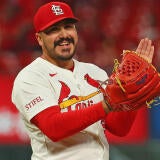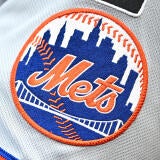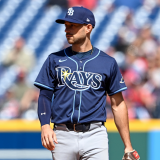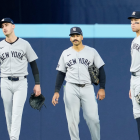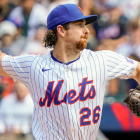MLB's biggest problem is not pace of play, and it's only getting worse in 2018
With each passing season, we're seeing more plate appearances end in a strikeout or a walk
The 2018 MLB regular season is a little more than two weeks old now, and although the schedule has been cut short by a record number of postponements, teams have played 186 games combined. That is 7.7 percent of the 2,430-game schedule.
While 7.7 percent of the schedule may not seem like much -- and it's really not -- those 186 games give us over 15,000 plate appearances worth of data across the league. That's 15,455 plate appearances, to be exact. Those 15,455 plate appearances are enough to help us spot some league-wide trends. For example:
| YEAR | MLB Strikeout Rate | MLB Walk Rate |
|---|---|---|
2013 | 19.9% | 7.7% |
2014 | 20.4% | 7.6% |
2015 | 20.4% | 7.7% |
2016 | 21.1% | 8.2% |
2017 | 21.6% | 8.5% |
2018 so far | 22.6% | 9.2% |
With each passing season, we're seeing more plate appearances end in a strikeout or a walk. In fact, you have to go all the way back to 2005 for the last time baseball's strikeout rate declined from one year to the next. With the exception of 2015, when the league strikeout rate remained static, baseball has a set new record strikeout rate every year since 2008.
The strikeout and walk rates across the league continue to trend up. Let's put that another way.
| YEAR | Percentage of plate appearances that end with a ball being put in play |
|---|---|
2013 | 71.4% |
2014 | 71.1% |
2015 | 71.1% |
2016 | 69.8% |
2017 | 68.8% |
2018 so far | 67.2% |
There is something to be said for the excitement of a big strikeout in a pressure situation. Generally speaking though, the more balls in play, the better. There's more action on the field and more plays to keep fans interested, and inevitably more balls in play will result in more offense. Offense is good! Offense is exciting.
To me this, not pace-of-play, is baseball's single biggest problem. The continued increase in strikeouts and the continued decline in balls in play. We're what, a year or two away from one out of every three plate appearances not resulting in a ball in play? Yuck. I see no reason to believe this will self-correct either. Pitchers throw harder than ever before and teams are more willing to accept strikeouts for power from their hitters. I don't think this is cyclical.
So how, exactly, does MLB change -- or at least slow down -- the continuing trend of fewer balls being put in play? Of the top of my head, I see two possible solutions:
- Require four strikes for a strikeout.
- Lower the mound.
No. 1 is presumably a non-starter because it changes the very fundamentals of the sport. I don't advocate for No. 1 either. Four balls to a walk, three strikes to a strikeout. It just works.
Lowering the mound is a more realistic solution and it is not without historical precedent. Baseball became so dominated by pitching in the late-1960s that MLB lowered the mound from 15 inches to 10 inches following the 1968 season. The impact was immediate:
- 1968: 2.98 ERA and 15.8 percent strikeouts
- 1969-73: 3.63 ERA and 14.5 percent strikeouts
Expansion played a role in the offensive spike -- four new teams joined the league in 1969 -- but, generally speaking, lowering the mound achieved the desired results. More balls were put in play and more runs were scored. More fun stuff happened on the field, basically, and fun stuff is how you attract (and keep) fans.
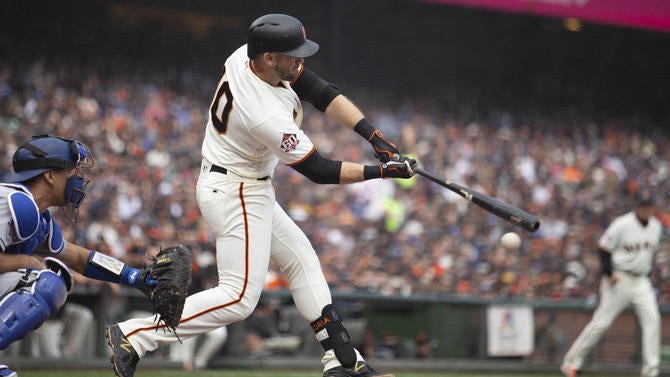
I applaud MLB's efforts to improve pace-of-play. There is too much standing around in baseball these days. The new mound visit rule seems to be working wonders. The game flows so much better now. Pace-of-play is not MLB's biggest problem, however. Not too many fans will complain about watching a four-hour game when its action-packed.
Baseball's biggest problem is an increasing lack of action. Strikeouts are going up and the number of balls in play is going down. And maybe lowering the mound isn't the best solution. Maybe MLB can come up with something better. Whatever the solution, the league-wide decrease in balls put in play doesn't figure to slow down anytime soon. The sooner MLB can create more balls in play and more action on the field, the better the game will be.


